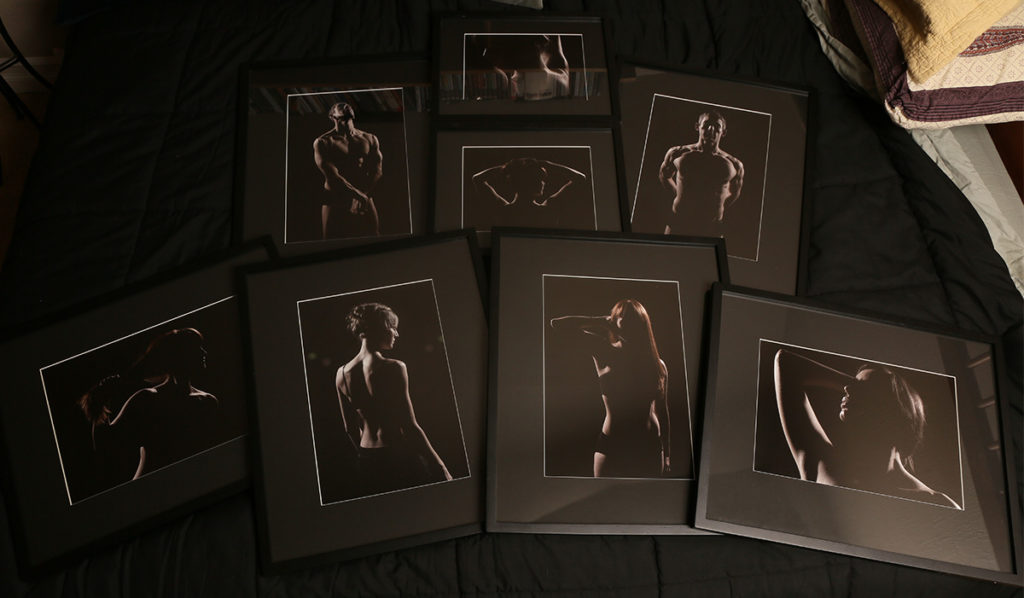Today, I was photographing some buildings in downtown Seattle, when I was approached by a security guard, told photography on building property was not allowed, and asked to leave. I was set up in a public space (a Privately Owned Public Open Space), a sort of public park contained on the building grounds. The security guard was insistent even after I reminded him that I was in a public space (which Seattle Municipal Code 23.49.017 paragraph F section 2 specifies must be treated as a public park in terms of free speech and access), so I ended up packing up the 5×7 camera while an insolent petty authoritarian stood over me, suspiciously watching everything I did. This process takes about 10 minutes, so the uncomfortable stare lasted for far too long.
Seattle’s Privately Owned Public Open Spaces
Seattle has a law on the books (referenced above), which allows buildings to receive certain perks (notably reduced restrictions on square footage, but presumably also tax breaks and other incentives) if they include some public amenities. In the case of the building in question, they have posted plaques that explain that it offers hill climb amenities (ie, elevators) and a public open space, accessible by elevator. The public open space is not conspicuously marked, and is indeed somewhat hard to find. If you didn’t know it was there, you would probably never suspect it or be able to find it.
Many buildings contain spaces like this (for a list, see this Seattle Department of Construction and Inspections page). The municipal code referenced above, 23.49.017, lays out in paragraph F, section 2, that the public space is effectively a public park:
Hours of Operation. The open space must be open to the general public without charge for reasonable and predictable hours, such as those for a public park, for a minimum of ten (10) hours each day of every week. Within the open space, property owners, tenants and their agents shall allow individuals to engage in activities allowed in public parks of a similar nature. Free speech activities such as hand billing, signature gathering and holding signs, all without obstructing access to the open space, or adjacent buildings or features, and without unreasonably interfering with the enjoyment of the space by others, shall be allowed. While engaged in allowed activities members of the public may not be asked to leave for any reason other than conduct that unreasonably interferes with the enjoyment of the space by others.
I’ve bolded the important part: you can do in these spaces the things you would normally be allowed to do in a park. That includes, among other things, setting up a camera and taking pictures.
US Copyright Law and Buildings
After I was forced to pack up my gear, I talked to the building management. They apologized for the security guard’s behavior, and after some conversation, we agreed that photography on building property is actually allowed. Their policy is that photography of the building is not allowed, and of course the drones working in the office aren’t there to set policy, they just have to enforce what their bosses say is the case.
While we were discussing the matter, one of them found a reference to the Federal copyright law, which basically says that buildings built before 1990 have no copyright rights, and can be photographed or reproduced as desired. Buildings built after 1990 have some copyright claims, but only if photographing a part of the building which isn’t publicly-accessible. That is, if you take a picture of the outside of the building where any member of the public is allowed be, the building designers have no copyright claim against you. If you’re photographing something which requires private access, you probably need permission (and good luck getting that).
This article at nolo.com explains the rights of photographers to publicly-viewable buildings pretty clearly, under the rules in 17 U.S. Code § 102 and 17 U.S. Code § 120. The bottom line is that you can photograph the external features of a building and you’re not violating copyright law.
Post-event Analysis
I did the wrong thing today. When the security guard approached me, I allowed him to control my photography, and I lost a pretty cool looking shot. I’ll never know if it was a good shot or not. I wasn’t sufficiently aware of my rights in the easily-confused situation of being on private property which is also a public space. In an era of increasing curtailment of rights, I feel pretty strongly that you should always stand for your rights. I regret now that I wasn’t completely clear in understanding my right to be where I was, doing what I was doing, and I let a petty thug with a rented badge shut me down. What, ultimately, would he have done? Called the police? I suspect they are more clear on the rights of people to be in public spaces.
Because I understand that he was doing what he thought his job was, and the building was pursuing policies which are dictated from on high (the property management company manages many buildings in Seattle, and their policies are surely set by the central office), I’m not going to file a complaint with the city, or name them publicly. If something like this happens again, however, you can rest assured that I will complain and do what little is in my power to force them to comply with the laws as they stand. I will also not allow them to stop me from doing what I was already legally doing, and next time I’ll be getting that shot.




